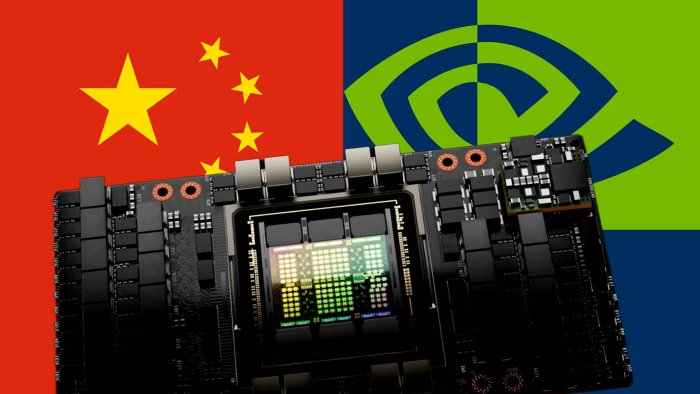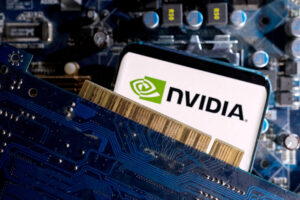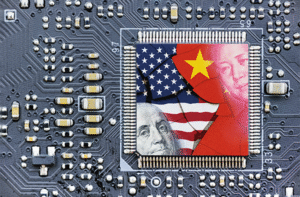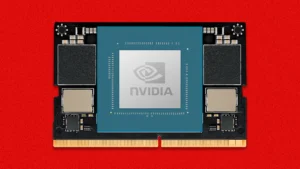Tech Leaders Like Nvidia See Strong Demand for Chips in China, While Companies Are Focusing on Energy-Efficient AI Hardware
Introduction
Artificial intelligence (AI) has triggered one of the most profound shifts in global technology. From powering generative AI applications like ChatGPT to enabling self-driving cars, medical research, and advanced robotics, the demand for AI hardware is unprecedented. At the heart of this revolution lies semiconductor technology, especially the GPUs (graphics processing units) and AI accelerators that fuel machine learning.
In 2025, a major trend is clear: tech leaders like Nvidia continue to see strong demand for chips in China, while global companies increasingly focus on energy-efficient AI hardware to reduce costs, meet regulatory requirements, and address sustainability concerns. This dual story — market expansion in China and efficiency-driven innovation globally — is shaping the semiconductor industry’s next chapter.
This article explores why China remains such a crucial market for AI chips, how companies like Nvidia are navigating geopolitical and regulatory challenges, and why energy efficiency is now the defining frontier for AI hardware innovation.
Nvidia’s Strong Demand in China
Why China Matters
China is the world’s largest consumer of semiconductors, accounting for over 50% of global chip demand. Its booming industries — from cloud computing to e-commerce, social media, and AI startups — create insatiable demand for high-performance processors. AI chips are particularly sought after because China is betting heavily on artificial intelligence as a driver of economic growth.
Nvidia’s Position
Nvidia remains the global leader in AI chips, with its GPUs serving as the “brains” behind most AI models. Despite U.S. export restrictions on advanced chips to China, Nvidia has maintained strong demand by offering modified versions of its products that comply with trade regulations. For example, the A800 and H800 chips, tailored for China, continue to see huge uptake among Chinese firms eager to train large-scale AI models.
Chinese tech giants like Alibaba, Baidu, Tencent, and ByteDance rely heavily on Nvidia chips for cloud services and generative AI initiatives. Local startups also drive demand, competing in everything from AI chatbots to industrial automation.
Geopolitical Balancing Act
The challenge for Nvidia is balancing compliance with U.S. restrictions and meeting Chinese customers’ needs. Yet, the sheer size of the Chinese market makes it impossible to ignore. Even constrained versions of Nvidia’s chips outperform most alternatives, keeping demand high.
This situation underscores the strategic importance of AI semiconductors in geopolitics — they are not just business products but critical infrastructure shaping national power.
The Shift Toward Energy-Efficient AI Hardware
The Energy Challenge of AI
While demand for raw power continues, AI’s massive computational needs come with a huge energy footprint. Training large AI models can consume millions of kilowatt-hours of electricity, equivalent to powering small towns for weeks. Running these models continuously for inference adds even more energy cost.
Data centers worldwide now face mounting pressure to cut energy consumption. Governments are tightening environmental regulations, while companies aim to meet carbon-neutral targets. This is why energy efficiency has become as important as performance in AI hardware design.
Nvidia and Others Focus on Efficiency
Nvidia itself has been pushing toward more power-efficient architectures, such as its Hopper and Blackwell GPUs. These chips are designed to deliver more computations per watt, helping enterprises cut operational costs.
Other companies are also stepping up:
-
Intel is developing AI accelerators with lower power usage, optimized for edge computing.
-
AMD has launched energy-efficient GPUs targeted at data centers and AI inference tasks.
-
Google’s TPU (Tensor Processing Unit) and Amazon’s Trainium are custom-designed for efficiency at scale in their cloud infrastructures.
The Rise of Specialized Chips
Beyond GPUs, there’s a surge in application-specific integrated circuits (ASICs) and neuromorphic chips designed to mimic brain-like efficiency. Companies like Graphcore, Cerebras, and startups in China and Europe are innovating in this space.
These chips focus on achieving the same AI tasks with dramatically lower energy needs, making them attractive for sustainability-minded enterprises.
China’s Push for Self-Sufficiency in AI Hardware
While Nvidia remains dominant, China is also heavily investing in domestic AI chip development to reduce reliance on U.S. suppliers. Companies like Huawei (with its Ascend series) and Biren Technology are working to create high-performance chips that rival Nvidia’s GPUs.
However, many of these efforts face challenges — from design complexity to restrictions on advanced manufacturing tools like EUV lithography. Still, the demand for Nvidia’s chips in China remains strong because homegrown alternatives have yet to match their performance at scale.
At the same time, Chinese firms are also exploring energy-efficient architectures, aligning with global sustainability trends. For instance, some startups are focused on chips tailored for edge AI devices, balancing performance and power constraints.
Energy-Efficient AI Hardware: Why It Matters
Economic Impact
Energy costs are among the largest expenses for data centers. With AI workloads multiplying, inefficient chips directly translate into higher operational costs. Energy-efficient hardware allows companies to save millions annually.
Environmental Impact
AI’s carbon footprint is becoming a major public issue. Training just one large AI model can emit as much carbon as five cars over their lifetimes. By adopting efficient hardware, tech companies can significantly reduce environmental damage.
Regulatory Pressure
Governments in the EU, U.S., and Asia are tightening emissions standards for data centers. Energy efficiency in AI hardware is becoming not just a business advantage but a compliance necessity.
The Convergence of Two Trends
The semiconductor industry is therefore at a fascinating intersection:
-
Explosive demand for AI chips in China, where AI adoption is skyrocketing despite trade restrictions.
-
A global pivot toward energy-efficient AI hardware, driven by costs, sustainability, and regulatory factors.
Nvidia is at the heart of both — supplying China with tailored chips while also leading innovations in power-efficient designs. Competitors like AMD, Intel, and regional players are following suit, creating a vibrant, competitive market.
Challenges Ahead
While opportunities are immense, challenges remain:
-
Geopolitical Uncertainty: Tensions between the U.S. and China could further restrict chip exports, reshaping demand.
-
Technological Bottlenecks: Designing chips that are both extremely powerful and energy-efficient is technically complex.
-
Supply Chain Risks: Advanced chip production still depends on a handful of manufacturers like TSMC, creating vulnerabilities.
-
Market Competition: With many players entering the energy-efficient AI hardware race, Nvidia faces increased competition.
The Road Ahead
The future of AI hardware will likely balance performance, efficiency, and accessibility. Some emerging directions include:
-
Quantum-inspired architectures for efficiency beyond silicon.
-
Photonic chips that use light instead of electricity to process information with minimal energy loss.
-
Edge AI accelerators for low-power, on-device intelligence in smartphones, IoT devices, and robotics.
-
Hybrid cloud-edge ecosystems where tasks are intelligently distributed based on energy and performance needs.
Nvidia’s ability to navigate Chinese demand while leading efficiency innovation could define its leadership for years. But the story extends beyond Nvidia — the entire semiconductor industry is rewriting its playbook to thrive in an AI-first, sustainability-conscious era.
Conclusion
The semiconductor industry in 2025 sits at the nexus of geopolitics, business demand, and sustainability pressures. Nvidia and other tech leaders are seeing massive demand for AI chips in China, driven by the country’s aggressive AI adoption. At the same time, the industry is shifting focus toward energy-efficient AI hardware, recognizing that raw power without efficiency is unsustainable.
This dual narrative — demand expansion in China and efficiency-driven innovation globally — will shape the AI era’s hardware backbone. Companies that can deliver both performance and sustainability will not only lead the market but also define the technological trajectory of the next decade.
As the world races toward AI-driven futures, the chips powering this revolution must be smarter, greener, and strategically deployed — a balancing act Nvidia and its peers are navigating with urgency and precision.
For quick updates, follow our whatsapp channel –https://whatsapp.com/channel/0029VbAabEC11ulGy0ZwRi3j
https://bitsofall.com/https-yourblog-com-googles-gemini-robotics-for-on-device-ai-in-robots/
https://bitsofall.com/https-yourdomain-com-android-integrated-ai-keyboard-message-editing/
Copyright Settlements: Navigating Legal Battles in the Age of Digital Content






